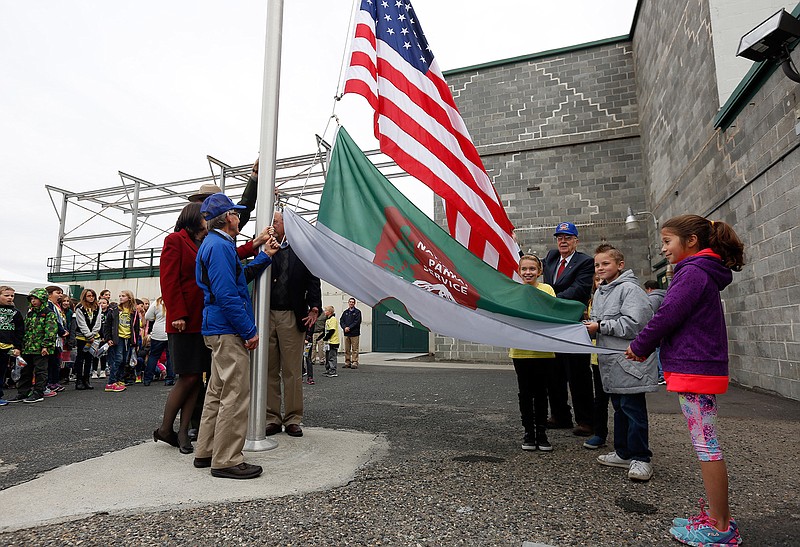SPOKANE, Wash.-The Manhattan Project National Historical Park at Hanford is a year old and proving to be quite popular.
About 13,000 people visited the park in its first year, despite its relatively remote location in southeastern Washington, far from the state's major population centers.
"It's a great number," said Kris Kirby, who recently was named superintendent of the historical park.
She's based in Denver and is splitting her time between the park's three sites: the Hanford Nuclear Reservation near Richland, Washington; Oak Ridge, Tennessee; and Los Alamos, New Mexico. Each community played a key role in developing the world's first atomic bombs during World War II.
The park was created a year ago, with the signing of an agreement between the U.S. Energy Department, which owns Hanford, and the U.S. Interior Department, which includes the National Park Service. Kirby is the national park's first employee, but officials are in the process of hiring a person to work specifically at the Hanford site.
The centerpiece of the Hanford park is the B Reactor, the world's first full-sized nuclear reactor. It was hurriedly built by the Manhattan Project in the darkest days of WWII as the United States rushed to beat Nazi Germany in developing the first atomic bomb.
B Reactor produced plutonium for the bomb dropped on Nagasaki, Japan, effectively ending the war. Most of last year's park visitors took buses out to the B Reactor, Kirby said.
Another option is to tour the handful of derelict buildings that are all that's left of the small towns evacuated to create the nuclear reservation. Exhibits tell the story of residents who were forced to leave their homes, farms and businesses in 1943 to make way for the secret wartime project.
About 50,000 people eventually worked to create the Hanford site during WWII.
A total of nine reactors eventually were built there to create plutonium for the nation's nuclear arsenal during the Cold War. All the reactors are now closed and the site is mostly engaged in cleaning up the huge volume of radioactive waste left over from plutonium production.
Visitors should not expect to see major changes at the national park until after a general management plan is prepared, which will provide guidance for the next 20 years, Kirby said. Work on the plan could start about a year from now and take two to three years to complete, she said.
One question is whether the park should build a visitor center, she said. "Right now we don't have the budget to construct one, and I don't know that we ever will get that budget, so we are assessing a variety of options," Kirby said. It may be possible to convert an existing building into a visitor center, she said.
Park tours are offered spring through fall, and Kirby wants to focus on increasing the number of people who take them.
The park also has seen some special events. On the National Park Service's 100th anniversary this fall, an organized bike ride took place on the Hanford site, which is normally closed to the public.

